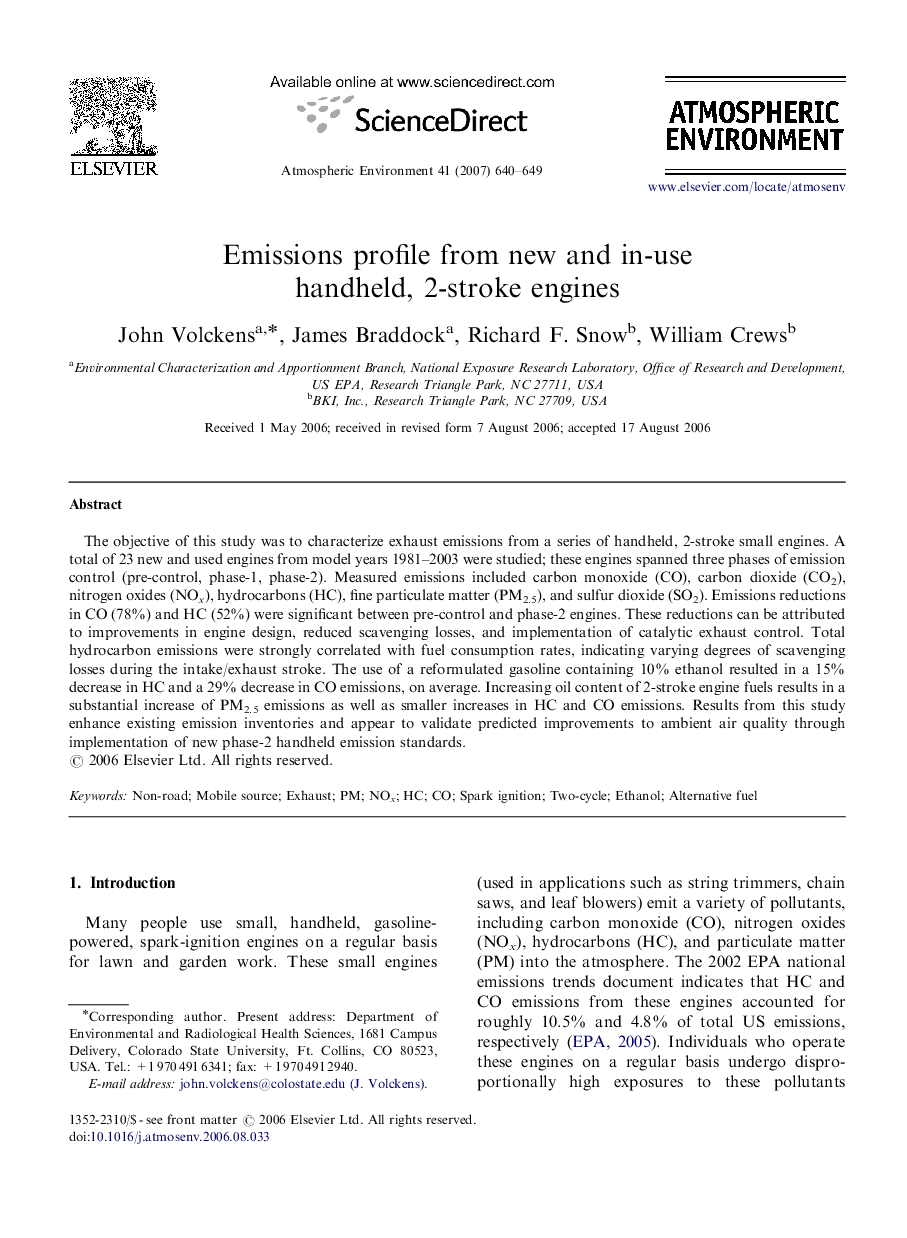| Article ID | Journal | Published Year | Pages | File Type |
|---|---|---|---|---|
| 4444326 | Atmospheric Environment | 2007 | 10 Pages |
The objective of this study was to characterize exhaust emissions from a series of handheld, 2-stroke small engines. A total of 23 new and used engines from model years 1981–2003 were studied; these engines spanned three phases of emission control (pre-control, phase-1, phase-2). Measured emissions included carbon monoxide (CO), carbon dioxide (CO2), nitrogen oxides (NOx), hydrocarbons (HC), fine particulate matter (PM2.5), and sulfur dioxide (SO2). Emissions reductions in CO (78%) and HC (52%) were significant between pre-control and phase-2 engines. These reductions can be attributed to improvements in engine design, reduced scavenging losses, and implementation of catalytic exhaust control. Total hydrocarbon emissions were strongly correlated with fuel consumption rates, indicating varying degrees of scavenging losses during the intake/exhaust stroke. The use of a reformulated gasoline containing 10% ethanol resulted in a 15% decrease in HC and a 29% decrease in CO emissions, on average. Increasing oil content of 2-stroke engine fuels results in a substantial increase of PM2.5 emissions as well as smaller increases in HC and CO emissions. Results from this study enhance existing emission inventories and appear to validate predicted improvements to ambient air quality through implementation of new phase-2 handheld emission standards.
